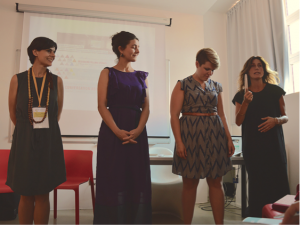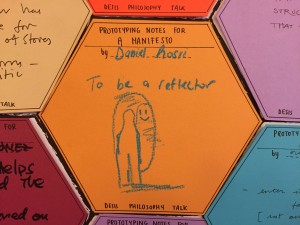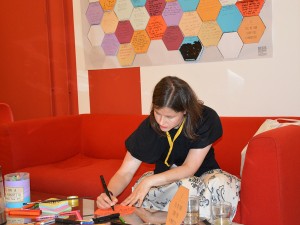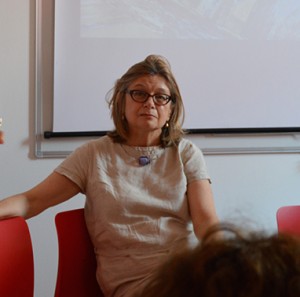This June, at the Milan Cumulus conference, I had the pleasure of speaking with colleagues from around the world about how literature—stories in which objects and places act as protagonists—can offer fresh perspectives on design. Mine was just one contribution to a larger discussion organized around the role of narrative in design for social innovation—a conversation organized by Elisa Bertolotti, Heather Dam, Francesca Piredda and Virginia Tassinari. All of them have become treasured colleagues and partners in future collaborations.

Elisa Bertolotti, Heather Dam, Francesca Pileddi, Virginia Tassinari
This summer, Elisa, Heather, Francesca, and Virginia will release their first collection of essays on design and storytelling entitled The Pearl Diver, published by DESIS Philosophy. (For a preview of my article in that collection, see: http://www.cd-cf.org/articles/the-literature-of-political-things-and-places/)

Ezio Manzini, Scientific Chair
Our session on Storytelling and Design was just one facet of the conference theme conceived by conference chair Ezio Manzini. Ezio asked us to examine the dynamic between culture and design in light of the changes in practice today. Questions were raised by Manzini about issues of rupture and continuity with the past. He suggested that in rethinking the culture of design today, we might learn both from the individual genius of Leonardo da Vinci, and from the work of groups such as Collecting Cultures, whose impressive director Anna Detheridge was among the opening night speakers as well. (See: http://www.annalindhfoundation.org/members/connecting-cultures)

Self-portrait and Vitruvian Man, Leonardo da Vinci, c. 1490
The introduction of the 15/16th-century Italian polymath into the conversation about the future and culture of design was startling (even in an Italian context). For surely, Manzini is not a traditionalist or remotely nostalgic. My own reaction (which may not or may not reflect the tenor of the conference) was that as design pursues its righteous and necessary ambition to address pressing social and environmental problems, the activity of private reflection has come to be tainted with elitism. Our urge to be social may be at risk of endangering the nurturing possibilities of retreat.

Detail of poster wall at Storytelling and Design

Taking a break while being part of the conversation
Clearly, the pendulum of design culture needs to oscillate between the two states. Moreover, some of us have greater affect working alone for long periods of time before joining the wonderfully messy fray of democratic exchange that is design for social justice. At least this is my defense as I begin my sabbatical this July and embark on the hermetic project of writing the book that the Storytelling and Design session took me one step closer to formulating—A Literature of Places and Things: Reading and Writing Design.


